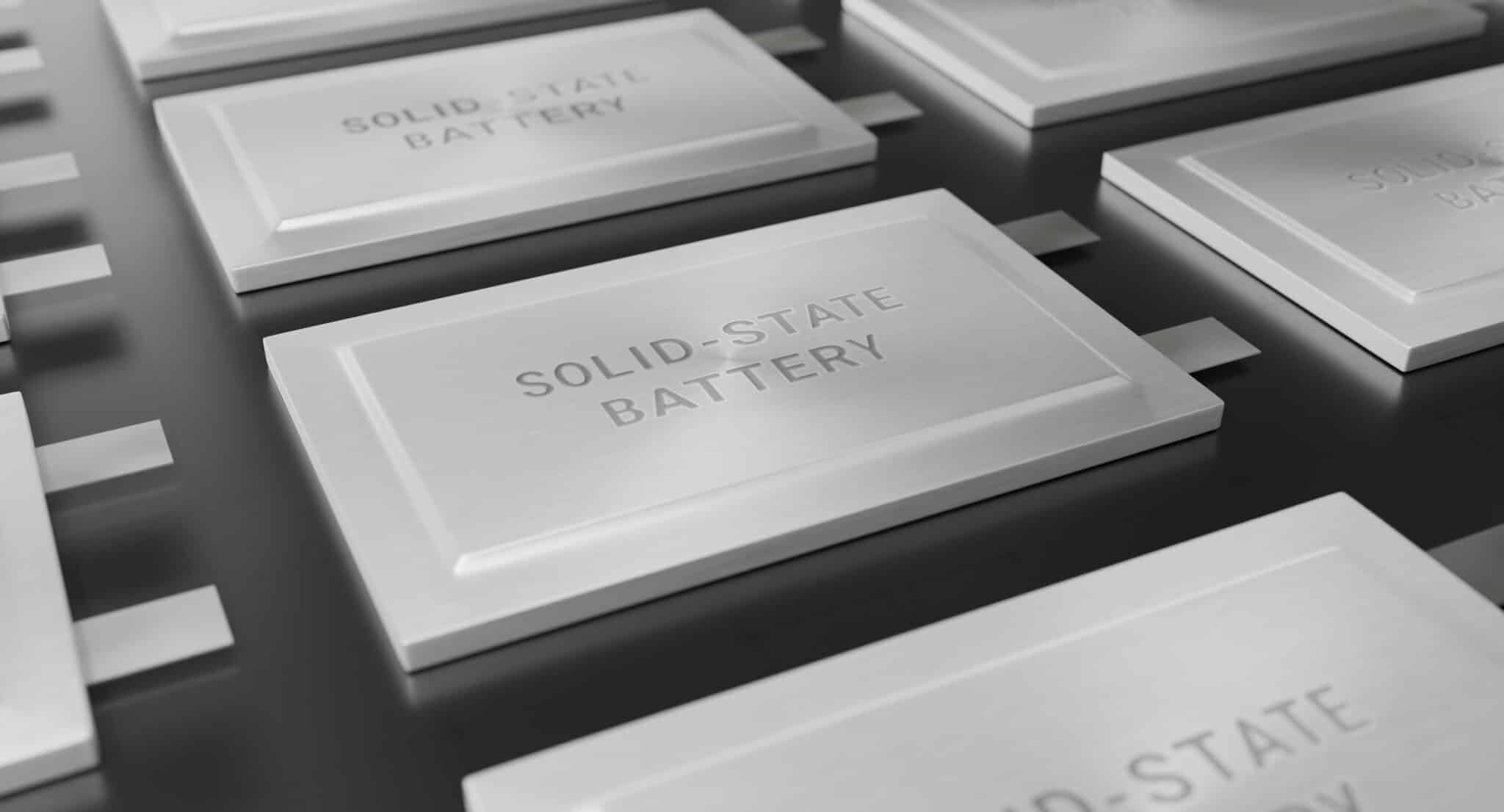Solid-state batteries offer enhanced safety, longer lifespan, faster charging, and higher energy density compared to traditional batteries. They use a solid electrolyte, reducing risks of leaks and overheating. Popular in electric vehicles and gadgets, they promise improved performance and environmental benefits. Challenges include high initial costs and complex recycling. With faster charging and more power in a compact design, they are poised to revolutionize energy storage for a more sustainable and efficient future.

Are you tired of your devices running out of juice way too soon? Imagine a world where your phone charges faster, your electric car goes further, and your gadgets last longer—all thanks to solid-state batteries!
These next-level batteries are making waves because they promise to be safer, more powerful, and more efficient than what we’re used to.
Whether you’re into the latest tech or just curious about what powers your favorite devices, solid-state batteries are worth keeping an eye on. Let’s explore what makes them so special!
What Are Solid-State Batteries?
Solid-state batteries are an exciting new type of battery that uses a solid material instead of the liquid or gel found in most traditional batteries. This solid material, called an electrolyte, transfers energy inside the battery, making it more stable and efficient.
Using a solid electrolyte means these batteries are much safer since there’s no risk of leaks, spills, or overheating. They also pack more power into a smaller, lighter package, which is great news for anything that needs a battery—from smartphones to electric cars. Solid-state batteries are becoming the go-to choice for the future of energy storage.
How Do Solid-State Batteries Work?
Solid-state batteries work differently from the regular batteries we’re used to by using a solid electrolyte instead of a liquid one.
In traditional batteries, liquid electrolytes move energy between the battery’s components, but they can be prone to leaks, overheating, or even catching fire. Solid-state batteries replace this liquid with a solid material, like ceramic or a special type of glass, which makes the battery much safer and more reliable.
This solid electrolyte not only improves safety but also enhances performance. Energy moves through the solid layers more efficiently, allowing devices to charge faster and hold power longer. This design upgrade means solid-state batteries can offer better energy storage and stability, making them a major advancement in battery technology.
Key Benefits of Solid-State Batteries
Solid-state batteries bring a range of impressive benefits that set them apart from traditional batteries. Here’s a closer look at why they’re becoming so popular:
Increased Safety
One of the biggest advantages of these advanced batteries is their improved safety. Since they use a solid electrolyte, there’s no risk of leaks, fires, or chemical reactions that can occur with the liquid electrolytes found in traditional batteries. Here are the key safety benefits:
- No Leaks or Fires: Solid electrolytes eliminate the common issues of leaks and fires associated with liquid electrolytes, reducing the potential for dangerous malfunctions.
- Enhanced Stability: The solid materials used in these batteries are inherently more stable, which significantly reduces the risk of overheating, short-circuiting, or exploding, even when subjected to high temperatures or stress.
- Safer for Everyday Use: These batteries are particularly beneficial for high-usage devices like phones, laptops, and electric vehicles, where any malfunction could have serious consequences. The solid-state design offers a much safer option for powering these everyday essentials.
- Growing Industry Confidence: The improved safety features have attracted significant investment from industries looking to incorporate safer battery technology into their products, ranging from consumer electronics to automotive applications.
- Building Consumer Trust: With safety being a critical factor for many consumers, the enhanced protection provided by these batteries helps build confidence in battery-powered devices, encouraging broader adoption and acceptance in the market.
Overall, the increased safety of this technology is a key factor driving its development and adoption, making it a safer choice for a wide range of applications and helping to pave the way for the future of battery-powered devices.
Longer Lifespan
Solid-state batteries tend to have a longer lifespan compared to their liquid-based counterparts, which often degrade faster due to chemical reactions within the liquid electrolyte.
The solid electrolyte is more resistant to wear and tear, allowing these batteries to handle more charge and discharge cycles without losing capacity.
This means that solid-state batteries can maintain their performance for a longer time, reducing the need for frequent replacements. For consumers, this translates to cost savings and less environmental waste, as batteries won’t need to be discarded as often.
Key points include:
- Greater charge cycles: Handles more charging without losing capacity.
- Less degradation: Solid electrolyte reduces wear and tear.
- Cost-effective: Longer lifespan means fewer replacements.
With a longer lifespan, solid-state batteries are a more durable and eco-friendly option that supports sustainable technology.
Faster Charging Times
Another standout benefit of solid-state batteries is their ability to charge much faster than traditional batteries. The solid electrolytes allow for quicker ion movement, which speeds up the entire charging process.
This means you can spend less time waiting for your devices to power up and more time using them. Fast charging is especially beneficial for electric vehicles, where reducing charging time can make the technology more convenient and appealing to users.
Faster charging not only enhances convenience but also makes solid-state batteries a strong competitor in the race to improve battery technology.
Key benefits:
- Quick ion movement: Speeds up charging.
- Reduced wait time: Devices power up faster.
- Enhanced convenience: Especially for electric vehicle users.
With faster charging times, solid-state batteries keep up with our fast-paced world, making technology more efficient and user-friendly.
Higher Energy Density
Solid-state batteries can store more energy in a smaller space, thanks to their higher energy density. This characteristic allows them to pack a lot of power without taking up much room, making them perfect for devices that need to be lightweight and portable.
In electric vehicles, higher energy density translates to longer driving ranges on a single charge, addressing one of the biggest hurdles in the adoption of EVs. This advantage also extends to gadgets like smartphones and laptops, which can run longer between charges without the need for larger batteries.
Benefits of higher energy density:
- More power, less space: Ideal for compact devices.
- Longer driving ranges: Key for electric vehicles.
- Extended device use: Longer runtime for gadgets.
Higher energy density ensures that solid-state batteries can deliver more power in smaller packages, making them a versatile solution for a wide range of applications.
Lightweight and Compact Design
Because of their efficient use of space and materials, solid-state batteries are often lighter and more compact than traditional batteries.
This makes them ideal for portable gadgets and electric vehicles, where reducing weight can significantly improve performance and efficiency.
A lighter battery can contribute to better fuel efficiency in electric vehicles and make devices easier to handle and carry. Additionally, the compact design offers more flexibility in product design, allowing manufacturers to create sleeker, more ergonomic devices.
Key advantages:
- Reduced weight: Enhances performance and efficiency.
- Better fuel efficiency: Important for EVs.
- Design flexibility: Enables sleeker, user-friendly products.
The lightweight and compact design of solid-state batteries makes them a game-changer in the evolution of portable and high-performance technology.
Where Are Solid-State Batteries Used?
These advanced batteries are not just a concept of the future; they are already making their way into various applications today.
Their unique advantages make them suitable for a wide range of uses, from everyday gadgets to high-tech electric vehicles and beyond. Let’s explore some of the key areas where this technology is making an impact.
Everyday Gadgets
These batteries are increasingly being used in everyday gadgets like smartphones, tablets, and laptops. Devices benefit from the improved safety, longer lifespan, and faster charging times that this technology offers. Here are some key advantages:
- Improved Safety: The solid construction reduces the risks of leaks, overheating, and short circuits, making devices much safer for everyday use.
- Longer Lifespan: With a more durable design, these batteries can endure more charge cycles without significant degradation, meaning your devices can last longer between charges and have a longer overall lifespan.
- Faster Charging: Solid electrolytes allow for quicker ion movement, significantly reducing charge times so your devices, like smartphones, can power up in just minutes.
- Lightweight and Compact: These batteries are not only powerful but also lightweight and compact, allowing for slimmer, more portable gadgets that are easy to carry around.
- Enhanced Portability: As this technology continues to advance, it opens up opportunities for even more devices to be powered efficiently, fitting seamlessly into our increasingly mobile lifestyles.
With these benefits, solid-state battery technology is set to transform how we use our everyday devices, making life more convenient, safe, and efficient.
Electric Vehicles (EVs)
One of the most promising applications of this technology is in electric vehicles (EVs). The automotive industry is constantly seeking better battery solutions that offer longer driving ranges, faster charging times, and improved safety.
This advanced battery technology checks all these boxes, making it an ideal choice for the next generation of EVs. Key benefits include:
- Longer Driving Ranges: With higher energy density, these batteries can store more power in a smaller package, allowing EVs to travel further on a single charge.
- Faster Charging Times: The solid electrolytes enable quicker ion movement, reducing charging times significantly, which is a huge convenience for EV owners.
- Improved Safety: Solid construction eliminates risks like leaks and overheating, providing a safer alternative to traditional liquid-based batteries.
- Space and Weight Efficiency: The compact and lightweight nature of these batteries allows for better vehicle design and more room for other components, enhancing overall performance and efficiency.
- Industry Investment: Many leading car manufacturers are investing heavily in this technology, aiming to produce more efficient, reliable, and sustainable electric vehicles for the future.
With these advantages, this technology is set to play a crucial role in the evolution of electric vehicles, making them more accessible and practical for everyday use.
Future Applications
Beyond everyday gadgets and electric vehicles, these advanced batteries have the potential to revolutionize many other industries in the future. Their unique properties could lead to innovative uses across various fields:
- Renewable Energy Storage: They can play a critical role in stabilizing the grid by efficiently storing energy from renewable sources like wind and solar power, making green energy more reliable and accessible.
- Aerospace: Their lightweight and compact nature makes them ideal for aerospace applications, where reducing weight is crucial for performance and fuel efficiency. This could lead to safer, more efficient power solutions for aircraft and spacecraft.
- Medical Devices: In the medical field, these batteries could power essential devices like pacemakers, hearing aids, and portable diagnostic tools, offering longer-lasting, safer, and more compact energy solutions that improve patient care.
- Wearable Technology: Their small size and high energy density make them perfect for wearable tech, such as smartwatches, fitness trackers, and other portable gadgets, providing longer battery life and enhanced performance.
- Smart Grids and IoT Devices: These batteries could support the growing demand for smart grids and Internet of Things (IoT) devices by offering reliable and efficient power sources that can be integrated into various systems and sensors.
As research continues and production scales up, the possibilities are nearly limitless. This forward-looking technology promises to play a major role in creating a more sustainable and energy-efficient world, driving innovation across multiple industries.
Environmental Impact of Solid-State Batteries
The shift towards advanced battery technologies is not only about better performance but also about making a positive impact on the environment.
These next-generation batteries offer several environmental benefits compared to traditional batteries, but there are also some challenges to consider. Let’s take a closer look at how they affect the environment.
Reduction in Carbon Footprint
One of the biggest environmental benefits of this technology is the potential for a significant reduction in carbon emissions. Traditional batteries, particularly those used in electric vehicles and large-scale storage, often rely on materials and manufacturing processes that are energy-intensive and polluting.
In contrast, the solid electrolytes used in advanced batteries can lead to more sustainable production methods and less reliance on harmful chemicals.
This means that the overall carbon footprint of battery production and use can be reduced, contributing to a cleaner environment.
Moreover, when used in electric vehicles, these batteries can help cut down on greenhouse gas emissions, making transportation more eco-friendly.
Recycling and Disposal Challenges
While these batteries offer many environmental advantages, there are still some challenges when it comes to recycling and disposal. The materials used, such as ceramics or glass, are not as straightforward to recycle as those in traditional batteries.
This can create hurdles in establishing efficient recycling processes, which are crucial for minimizing waste and maximizing resource use.
Additionally, as the technology is still relatively new, recycling methods are not yet fully developed, posing a potential environmental risk if these batteries are not properly managed at the end of their life.
Ready to Power Up with the Latest Technology?
Curious about how the latest battery advancements can improve your gadgets and electric vehicles? At Mister Sparky of Charleston, SC, we’re all about embracing cutting-edge solutions to keep your home running smoothly.
Whether you’re in Charleston, Mt. Pleasant, or Summerville, our expert team is here to help you stay ahead with reliable and efficient power solutions.
To top-notch electrical services, we’ve got you covered. Reach out today to learn more about how we can bring the latest energy innovations right to your doorstep! Don’t wait—get powered up with Mister Sparky!

FAQs about Solid-State Batteries
What makes them different from traditional batteries?
These batteries use a solid electrolyte instead of a liquid or gel one, which makes them safer, longer-lasting, and more efficient. This solid structure reduces risks like leaks, overheating, and short circuits that are common in traditional batteries with liquid electrolytes.
Are they already available in the market?
While still in the early stages of widespread adoption, these batteries are gradually being introduced in products like gadgets and electric vehicles. Many companies are actively developing and testing this technology, aiming to make it more accessible and affordable in the near future.
Do they charge faster than traditional batteries?
Yes, these batteries typically charge faster because the solid electrolytes allow ions to move more quickly, resulting in significantly reduced charging times. This faster charging capability makes them much more convenient for everyday use, especially in high-demand devices like smartphones and electric vehicles.
Are these batteries more environmentally friendly?
They can be more environmentally friendly due to their lower reliance on harmful chemicals and potentially reduced carbon footprint during production and use. However, the current challenges lie in recycling and disposal, as the solid materials can be harder to process than those in traditional batteries.
Will they be more expensive?
expensive due to the use of cutting-edge materials and more complex production processes. However, as the technology matures and production scales up, costs are expected to decrease, making them more affordable over time.









